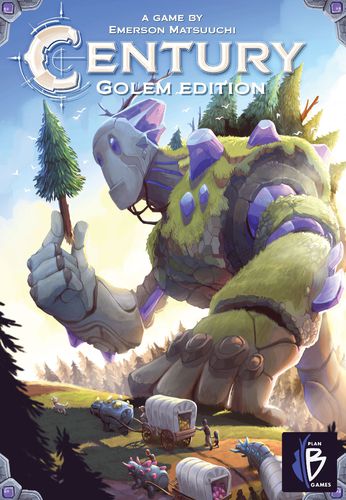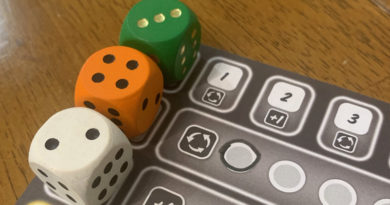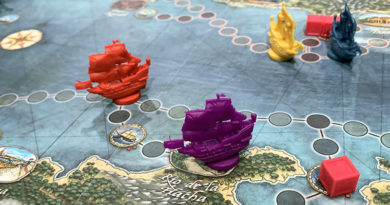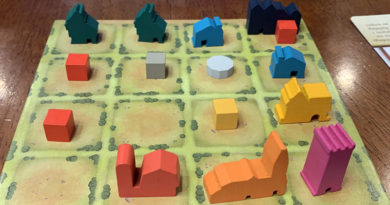Mistborn: House War board game review
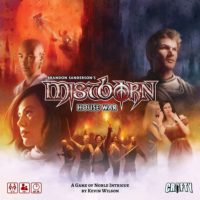
Brandon Sanderson has a very prominent spot on our family bookshelves.
Well, not Brandon himself, but rather his books.
That’s because our boys absolutely LOVE his fantasy novels – especially his Stormlight Archive and Mistborn series.
They love them so much, I finally cracked the cover on the first book in the Stormlight Archive, The Way of Kings and am enjoying it as well. My plan is to dive into the Mistborn series once I get through the 3 thick Stormlight books.
And thanks to playing Mistborn: House War, by Crafty Games, I’ve already been introduced to characters and themes of the series.
The good news is that you don’t have to be familiar with the Mistborn books to enjoy the game. The better news is that fans of the books will enjoy the game even more.
How to play Mistborn: House War
Mistborn: House War turns players into leaders of the great noble Houses, struggling to weather the cataclysmic events of the first novel of the series. Players face off against Kelsier, Vin, Sazed, and other heroes of the novels to maintain the delicate balance held in place for the last thousand years.
One facet of the game has players cooperating to solve problems threatening the world. While another facet of the game is that players are also competing for the Lord Ruler’s favor.
If players save the empire, the player with the highest score wins. But if the empire falls, the player with the lowest score wins instead!
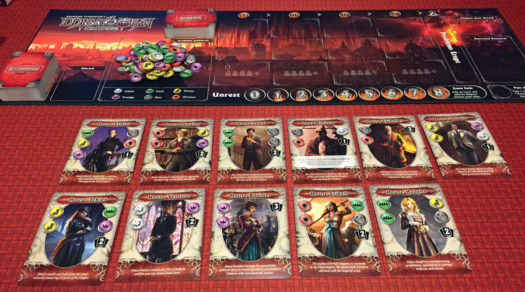
The crux of the game is in solving the Problems that plague the empire.
The Problem Deck is set on the left side of the board and cards will be placed in different columns on the board and will advance to the right until the Problem is either solved or it erupts.
To begin, the Problem Deck is shuffled and a number of cards equal to the number of players are drawn and placed in the column matching its starting Urgency.
During the game, players will work to solve the Problems on the board by contributing the type and amount of resource tokens indicated at the bottom of the card. They can work together or solve a problem all by themselves (if they have enough resources).
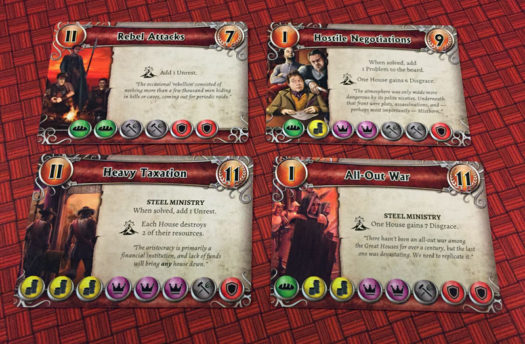
Players start by randomly selecting a House leader sheet. Each House leader has a special ability and starts the game with the resources indicated by the icons on their sheet as well as the number of Personality cards they draw. Players get those resources and cards at the start of the game as well as at the start of each of their turns.
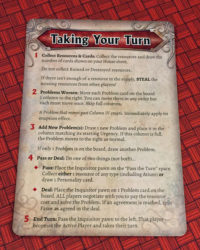
On a player’s turn, they first collect the resources and cards shown on their House sheet. Then they shift each Problem card 1 column to the right. The cards can be moved in any order, but each problem must be moved once. When moving a problem and the column to the right is full, the problem instead skips over to the next column until it finds an empty space.
The player then draws 1 new Problem card and places it in the column indicated by the card. (It likewise moves to the right if that column is full.)
Then the player chooses to take 1 of these actions: Pass their turn, or try to Solve a Problem.
When a player chooses to Pass, they get to take 1 resource of their choice from the general supply or draw 1 Personality card.
If a player chooses to Solve a Problem, they place the active player pawn on the Problem card they want to solve and Dealing begins.
All players negotiate with the active player to jointly pay the resources shown. Generally players offer to pay some of the resources in exchange for some of the Favor points (shown in the upper right of the card). Other players can also choose not to participate (but the active player is always a part of the negotiations).
If an agreement is reached, the problem is solved by players paying the resources they promised and getting the Favor on the card as negotiated. Some problems also have effects that occur when solved. If a deal is not reached, the problem stays on the board and play continues with the next player’s turn.
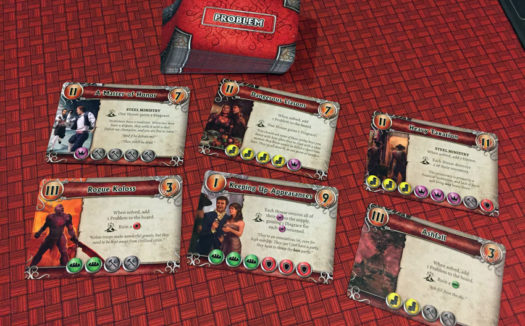
If a Problem moves past column 4, the Problem erupts!
When a problem erupts, players apply the effects listed next to the volcano on the Problem card and discard it. If the eruption has a target, the active player chooses which player is the target. Eruption effects can be things like adding more problems, adding Unrest, destroying resources, discarding cards, gaining disgrace, and more.
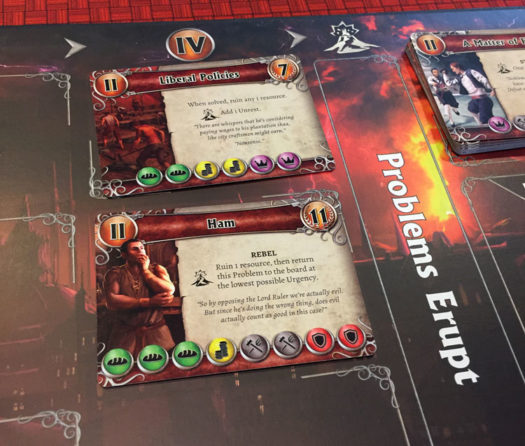
Play continues like this in clockwise turns until the heorine, Vin, appears (in the form of a Problem card to be solved) or until Unrest is too great.
Ultimately players are trying to gain the most Favor. Players earn Favor token when they please the Lord Ruler by solving problems and gain Disgrace tokens when they displease him (various ways). Both types of tokens have the same back and are kept secret by the players until the end of the game.
The game can end in 1 of 3 ways:
- The Vin Problem card is solved: The empire is saved and the player with the highest score wins the game.
- The Vin Problem erupts and Unrest is 7 or lower: The empire is barely saved and the player with the highest score wins.
- Unrest score is 8 or higher: The Lord Ruler is overthrown and players want to be as distanced from him as possible – thus, the player with the lowest score wins.
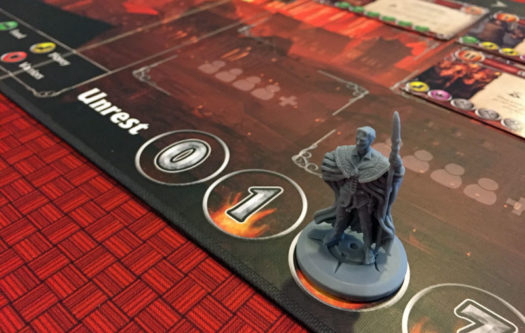
Can the whole family enjoy playing Mistborn: House War?
Mistborn: House War is clearly a game created for fans of the book series. While those who aren’t familiar with the books can still enjoy it, the sweet spot is for fans.
Since I was unfamiliar with the characters and themes of the books, I can speak for those in a similar spot. I would guess many members of your family will fall into the same category (those unfamiliar with the Mistborn universe).
My enjoyment in playing the board game was more about the mechanics than the theme.
And in that regard, Mistborn: House War is best suited for players who like the mechanics of the game – namely resource collection, special actions, and negotiation.
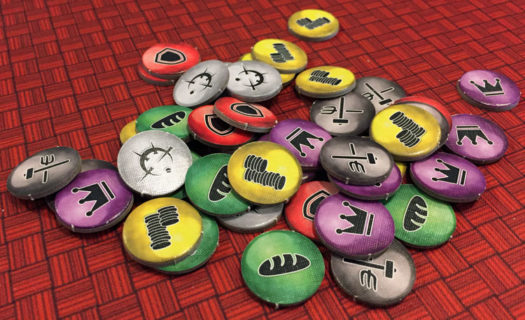
The main steps of a turn are simple enough for anyone to grasp (get resources, move problems, solve problems by paying resources, get Favor rewards). But the part of the board game that may make some hesitate is the negotiation.
And that’s going to be something best suited for older players.
If you’ve got teenagers that like to argue or debate, this may be just the game for them. Because Mistborn: House War feels a lot like politics. It’s about maneuvering, plotting, and making special deals.
And when played with my boys, they ate it up!
While on one hand we’re working together to solve problems, it’s clear that we each want the upper hand in solving those problems to get the most favor.
Yet it’s also a tricky balance of when to help and when to hinder. Depending on what happens when a problem erupts, you may want to let that problem cross the board quickly because it will hurt another player more than you.
Or maybe you want to time a problem erupting when you’re the active player so you can choose who the bad effect targets.
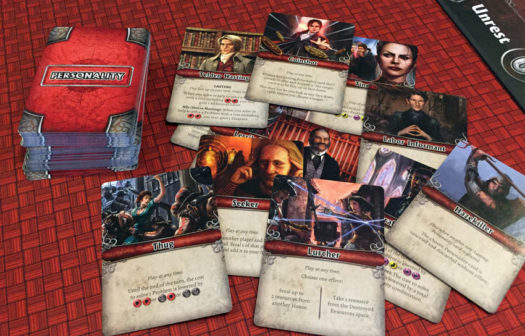
The game hinges a lot on how problems move along the track. The luck of the draw will influence where a problem card is initially placed, but after that it’s all about the players’ maneuvering that impacts the outcome.
Since players can choose which cards to move first, players can force some cards to skip complete columns and rush to eruption. And at some point during the game you may purposefully choose to seed some Unrest in the empire. Or even take it all the way and try to cause the game to end that way and you be left with the least points and win.
That’s what makes the game fun for us.
As far as my boys go, they enjoy the game on a whole different level.
They totally get into the theme.
Even from the outset when drawing our House leader sheets, they were totally into who they got and who I was. And they immediately teamed up against me – not because I’m dad and it’s fun to target dad but because of who my character was.
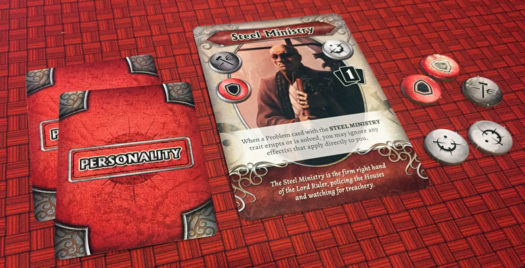
They understand the different types of resources in the game and know how they play into the empire. And they even love seeing the various themed problems that arise.
Then there are the special abilities of the House leaders as well as the Personality cards that totally live up to the theme (or so they tell me). Just when I think I have them where I want them, they play a card on me that totally swings the balance. While I’m reeling, they’re laughing it up.
So if you’ve got teenagers familiar with Mistborn who also like to wheel and deal, then Mistborn: House War is one they’ll enjoy diving into.
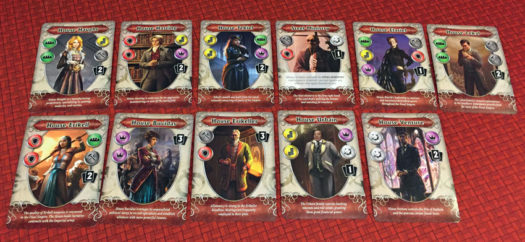
How does Mistborn: House War score on our “Let’s Play Again” game meter?
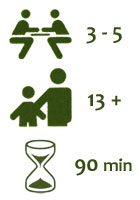 Mistborn: House War is a game our boys rank high on our “let’s play again” game meter. They’re not satisfied with just one play of the game.
Mistborn: House War is a game our boys rank high on our “let’s play again” game meter. They’re not satisfied with just one play of the game.
One great thing about the game is that players can choose the relative length of the game at the outset. Players can make the game shorter or longer depending on how they shuffle the Vin card into the problem deck.
And our boys don’t want to settle for the short game anymore. They’re all about a longer game with more problems to solve, more deals to make, more opportunities to influence unrest and disgust, and overall just more playing.
We’d like to thank Crafty Games for a review copy of Mistborn: House War.

